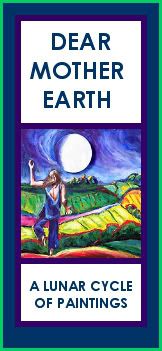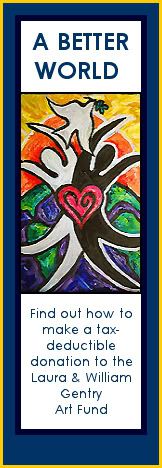
Here is William’s photograph of the story of Mary visiting the home of her relative, Elizabeth. It is the 6th picture in this “It’s in the Book” series depicting bible scenes in a modern context.
Luke 1:39-45
In those days Mary set out and went with haste to a Judean town in the hill country, where she entered the house of Zechariah and greeted Elizabeth. When Elizabeth heard Mary’s greeting, the child leaped in her womb. And Elizabeth was filled with the Holy Spirit and exclaimed with a loud cry, “Blessed are you among women, and blessed is the fruit of your womb. And why has this happened to me, that the mother of my Lord comes to me? For as soon as I heard the sound of your greeting, the child in my womb leaped for joy. And blessed is she who believed that there would be a fulfillment of what was spoken to her by the Lord.”
Here are some examples of artistic renderings of this scene from history.

The oil painting above is by Dieric the Elder from 1445. The fact that both women are pregnant in this scene is accentuated by them touching one another’s bellies. It is a serious, yet intimate moment that symbolically shows how the lives of their sons will be intertwined. Elizabeth is crouching down in a sort of bow to show her worship of Mary’s yet unborn baby.
This painting, which was created for a chapel is now housed in the Louve in Paris. It was created by Ghirlanaio 1491. Both Mary and Elizabeth wear classical costumes to show the noble purpose they serve in history. You can see halos floating gingerly above their heads. The elderly Elizabeth bows even more reverently to Mary, showing her understanding of the significance of the child in her womb.

This painting by Weyden is from 1440. It was created by Ghirlanaio 1491. Again, we have Mary and Elizabeth touching one another’s pregnant bellies while wearing robes of the nobility. Young trees spring up around them, symbolizing the magnificent new life within each woman.

This piece by Peter Paul Rubens from 1612-14 gives a closeup view of Elizabeth pointing to the extended belly of Mary who is dressed like a noble European woman of the time. The servant woman on the lefthand side looks out into the eyes of the viewer as if to say: “Do you see what’s going on here? Do you realize the significance?”

This is a charcoal drawing is an illustration by Edy Legrand for a bible translation by François Amiot and Robert Sieve. Mary (on the right) gently places her hand on her belly and presumably listens to the words of her wise relative. The artist conveys a sense of movement all around them by the blur of the charcol. Like the other pieces, this work can give us a sense of the magnitude of this maternity for Mary and, indeed, for the whole world.
For William's version of this scene, it was our intention to show joy, vitality and motion. Unlike other depictions of this story, Elizabeth takes center stage. Her child is closer to delivery and he will be John the Baptist—the one who prepares the way for Jesus. Hence, his mother prepares the way for Jesus' mother in this scene.
Elizabeth makes an almost comical face to express her surprise at how her baby leaps for joy within her at hearing the voice of the Blessed Virgin Mary.
Meanwhile, Mary shows her youth and exuberance by running up to Elizabeth. She is almost flying into this scene—so excited to share the good news of her pregnancy with her relative. Our goal is to bring this scene into a modern context, giving both characters a new humanity with which we can relate so that we may enter into the divine drama ourselves.








No comments:
Post a Comment